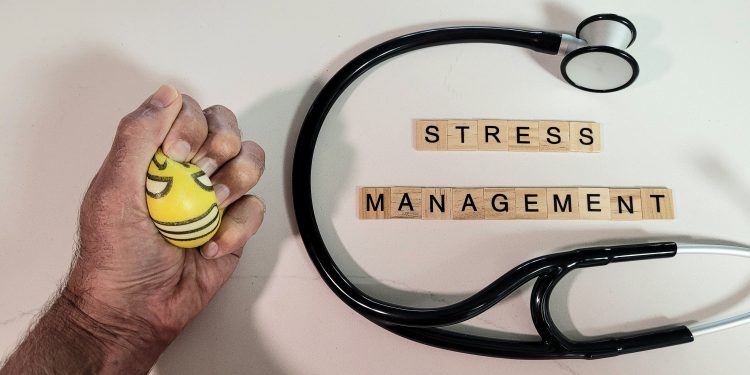The Benefits of Biofeedback for Stress Management and Wellness
There are methods for managing stress that have been utilized to assist people in preserving homeostasis and autonomic balance.
A potent technique for stress reduction and relaxation instruction is biofeedback.
It enables people to discover how to control their physiological processes in order to reestablish or maintain autonomic balance.
Meaning of Biofeedback
Biofeedback is a technique you can use to learn how to manage several of your body’s functions including your heart rate.
During biofeedback, electrical sensors are attached to you to assist you learn more about your body.
This feedback enables you to modify your body subtly to get the outcomes you need, such as pain relief, by relaxing specific muscles, for example.
In essence, biofeedback allows you to practice new bodily movements, frequently to enhance a medical condition or a physical aptitude.
A treatment approach based on biofeedback methodology is known as biofeedback therapy.
Background of Biofeedback
Experimental psychologists created biofeedback for the first time in the 1960s.
Practitioners of biofeedback receive training in psychology, physiology, and using electrical devices.
Principles of biofeedback
Positive reinforcement, namely “operant conditioning,” is the basis of biofeedback.
According to studies, positive reinforcement makes a behavior more likely to occur.
When a behavior is encouraged frequently and consistently over time, it can be learned and remembered.
Types of biofeedback
Biofeedback types include:
Brain waves: This type employs scalp sensors and an electroencephalograph to track your brain waves (EEG).
Breathing: Bands are wrapped over your chest and abdomen during respiratory biofeedback in order to track your breathing patterns and respiration rate.
Heart rate: Electrocardiograph (ECG) sensors attached to your wrists, lower torso, or chest are used to detect your heart rate and its variability.
Muscle contraction: In order to track the electrical activity that results in muscle contraction, sensors are placed across your skeletal muscles and an electromyograph (EMG) is used.
Sweat gland activity: Electrodermograph (EDG) sensors fitted around your fingers, on your palm, or on your wrist assess the amount of sweat on your skin and the activity of your sweat glands, alerting you to worry.
Temperature: Blood flow to your skin is measured by sensors that are affixed to your fingers or feet. In light of the fact that stress frequently causes a drop in body temperature, a low reading may serve as a cue to start relaxing measures.
Forms of biofeedback therapy
The most commonly used forms of biofeedback are:
Electromyography (EMG), which is used to measure muscle tension.
Thermal biofeedback measures skin temperature.
Neurofeedback or electroencephalography (EEG), is used to measure brain wave activity.
Indications For Biofeedback
Anxiety disorders
Tension and migraine headaches
Myofascial pain and fibromyalgia
Hypertension
Irritable bowel syndrome
Raynaud’s disease
Age-related macular degeneration
Asthma
Autism
Attention Deficit Hyperactivity Disorder (ADHD)
Back pain
Bed wetting
Chronic pain
Constipation
Depression
Diabetes
Eating disorders, including bulimia, and overeating
Epilepsy and related seizure disorders
Headaches and migraines
Head injuries
Irritable bowel syndrome (IBS)
Learning disabilities
Motion sickness
Muscle spasms
Sexual disorders, including pain while having intercourse
Spinal cord injuries
Muscle pain and immobility
Contraindications For Biofeedback
Acute psychiatric emergencies
Main treatment for management of severe hypertension.
Biofeedback for stress management
Physiological response to stress is the main thing that has allowed humans to evolve, grow and survive over the years.
But the problem is that we neglect the fact that the types and frequency of the stress we put ourselves under is having an accumulative effect on us.
Without adequate time to regenerate, recover, and relax our nervous system is nearly continuously active with no relaxation time.
Subsequently, this leads to serious health problems.
Although we know that stress originates in our mind as mental or emotional activity, it has a real and significant negative effect on our physical health also.
The mind and body are often described as separate entities, yet one always affects the other.
Biofeedback techniques for stress bring this connection very much into our consciousness.
Depending on the patient’s mental or physical health goals, they need anywhere from 10–20 sessions to begin to spot positive results.
The biofeedback therapist guides and trains patients through stress management exercises while on each session.
Each session typically lasts an hour and teaches a variety of relaxation techniques to practice at home.
Patients will have the proper tools and knowledge to apply these techniques on their own eventually.
The following innovative biofeedback methods for stress reduction could be used:
Breathing exercises for heart rate regulation
Relaxation activities to keep your mind and mental health in check
Stress reduction to maintain your muscles’ healthy function
Benefits of Biofeedback in stress management
Biofeedback has been proven to be a safe method for stress management.
Below are benefits of Biofeedback
It is non-intrusive.
It improves your knowledge of your body.
It might make the use of medications more efficient.
It allows you to have emotional control..
Risks
Although generally safe, not everyone may benefit from biofeedback.
For individuals with specific medical concerns, such as heart rhythm issues or specific skin abnormalities, biofeedback devices may not function as intended.
Talk it over with your doctor first, of course.
Conclusion
Life is certain to be stressful at times. And we just can’t completely avoid it.
But it is only fair that everyone has access to skills for improved stress management so that we can all avoid suffering when it arises.
With the help of biofeedback, you can learn how to handle stress in a pleasant and safe way.
Also, you’ll leave knowing more about your body and mind and being better prepared to handle stress in the future.











Discussion about this post